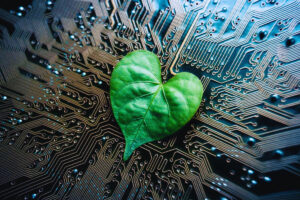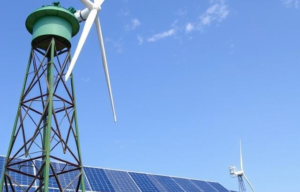Introduction to Green Technology: Shaping a Sustainable Future
Definition of Green Technology
Green Technology, often referred to as clean technology, encompasses eco-friendly innovations and sustainable practices aimed at reducing human impact on the environment. It focuses on using renewable resources, reducing waste, and creating solutions that promote environmental preservation.
Importance of Sustainability and Eco-Friendly Innovations
Sustainability is at the core of Green Technology. In an era where climate change, pollution, and resource depletion are pressing concerns, eco-friendly innovations play a pivotal role in ensuring a healthier planet for future generations.
How Green Technology is Transforming Industries
From energy to agriculture, Green Technology is revolutionizing industries by introducing clean alternatives, reducing carbon footprints, and promoting circular economies. Businesses are now prioritizing sustainability, driven by both environmental concerns and consumer demand.
1. Understanding Green Technology
What is Green Technology?
Green Technology refers to the development and application of products, equipment, and systems that conserve natural resources and the environment. It aims to minimize pollution, reduce energy consumption, and promote sustainability.

Key Principles and Objectives
- Renewability: Emphasizing renewable energy sources like solar and wind.
- Energy Efficiency: Designing systems that use less power.
- Waste Reduction: Encouraging recycling, upcycling, and minimal waste production.
- Sustainable Development: Balancing economic growth with environmental responsibility.
The Role of Green Tech in Reducing Environmental Impact
Green Tech actively combats climate change by reducing greenhouse gas emissions, promoting renewable energy, and supporting eco-conscious practices across various sectors.
2. The Role of Renewable Energy

Solar Energy: Powering the Future
Solar panels, solar batteries, and solar farms are leading the charge in clean energy. They provide a renewable and abundant power source, reducing dependence on fossil fuels.
Wind Energy: Harnessing Nature’s Power
Wind turbines convert kinetic energy into electricity, offering a clean, sustainable energy solution. Offshore and onshore wind farms are pivotal in the transition to renewable energy.
Hydropower & Biofuels: Alternative Energy Sources
- Hydropower: Utilizes water flow to generate electricity, making it a consistent and reliable energy source.
- Biofuels: Derived from organic materials, biofuels offer a cleaner alternative to traditional fossil fuels.
3. Green Technology in Transportation
Electric & Hybrid Vehicles: Driving Towards Zero Emissions
The rise of electric vehicles (EVs) and hybrids is transforming the auto industry. These vehicles reduce carbon emissions and reliance on non-renewable energy sources.
Public Transport Innovations
Electric buses, smart transit systems, and eco-friendly bicycles are revolutionizing public transport, making it cleaner and more efficient.
Future of Sustainable Mobility
Advancements like autonomous EVs, hydrogen-powered vehicles, and improved battery technology are set to redefine sustainable transportation.
4. Sustainable Manufacturing & Packaging
Eco-Friendly Materials in Manufacturing
Industries are shifting towards biodegradable, recyclable, and low-impact materials, reducing their carbon footprint.
Biodegradable & Recyclable Packaging Solutions
Sustainable packaging reduces waste and promotes recycling, crucial for reducing environmental pollution.
Green Factories: Energy-Efficient Production Methods
Green factories utilize renewable energy, efficient machinery, and waste reduction strategies to minimize their environmental impact.
5. Smart Technologies for a Greener Future
AI & IoT in Energy Management
Artificial Intelligence (AI) and the Internet of Things (IoT) optimize energy consumption, improve efficiency, and reduce waste in homes and industries.
Smart Cities & Green Infrastructure
Smart cities integrate technology with eco-friendly designs, focusing on renewable energy, efficient waste management, and sustainable urban planning.
Sustainable Home & Office Innovations
Energy-efficient appliances, smart thermostats, and green building materials are making homes and offices more eco-conscious.
6. Green Technology in Waste Management
Recycling Advancements: AI-Driven Waste Sorting
AI-powered systems enhance recycling efficiency by accurately sorting waste, promoting higher recycling rates.
Sustainable Disposal Methods
Eco-friendly disposal techniques like composting, waste-to-energy, and controlled landfills help reduce environmental impact.
Upcycling and Zero-Waste Initiatives
Upcycling repurposes waste materials into valuable products, while zero-waste movements aim to minimize landfill contributions.
7. Green Agriculture & Food Industry
Sustainable Farming Techniques
- Organic Farming: Avoids synthetic fertilizers and pesticides.
- Vertical Farming: Uses less space and resources, maximizing yield.
Water Conservation Technologies
Drip irrigation, rainwater harvesting, and AI-based monitoring help conserve water in agriculture.
Eco-Friendly Food Production
Reducing food waste, promoting plant-based diets, and adopting eco-conscious packaging help make the food industry more sustainable.
8. Challenges & Future of Green Technology
Current Barriers to Large-Scale Adoption
- High Initial Costs: Investment in green tech can be expensive.
- Lack of Infrastructure: Some regions lack the necessary facilities.
- Policy and Regulatory Challenges: Inconsistent policies hinder global adoption.
Government Policies & Global Initiatives
Incentives, tax breaks, and global treaties like the Paris Agreement encourage green technology adoption.
Predictions for the Future of Green Tech
With advancements in AI, energy storage, and clean energy solutions, Green Technology is poised for rapid growth, potentially becoming the norm in the next few decades.
Conclusion
Adopting Green Technology is not just a trend—it’s a necessity. Businesses, governments, and individuals must work together to create a sustainable future. By investing in eco-friendly practices today, we can ensure a healthier planet for future generations.
FAQs
1. What are the main benefits of Green Technology? Green Technology reduces pollution, conserves natural resources, and promotes long-term sustainability.
2. How does renewable energy help combat climate change? Renewable energy sources like solar and wind produce minimal greenhouse gases, reducing global carbon footprints.
3. What role does AI play in Green Technology? AI optimizes energy use, improves recycling systems, and enhances efficiency in various eco-friendly technologies.
4. Can Green Technology be cost-effective? While initial investments can be high, long-term savings on energy and resources make Green Tech cost-effective over time.
5. How can individuals contribute to a greener future? By adopting eco-friendly habits—like using renewable energy, reducing waste, and supporting sustainable products—individuals can significantly reduce their environmental impact.